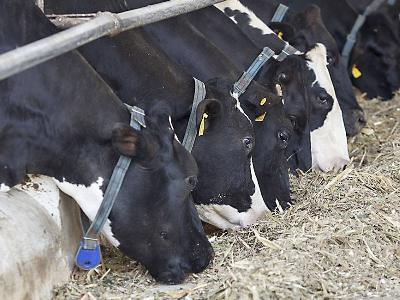Total mixed ration system for dairy cows: benefits, drawbacks

Cows fed a total mixed ration (TMR) can produce an extra 1-3 kg of milk per day. Toa555 | Dreamstime.com
The many benefits of total mixed ration are weighed against their disadvantages for farmers to decide whether such feeding system is for them to adopt.
The use of total mixed ration (TMR) in dairy cows is so widespread these days that we often forget there are still enterprises that rely on older feeding systems. Such was the case of my newest customer, a modest dairy farmer, who wanted to update his whole feeding system. When it came to designing a new nutrition program to match his modern genetics, the question came up whether we should also look into TMR feeding. As it happened, the exact cost of the machinery and extra labor were already known as a nearby farm had already adopted such technology. But, the big question was whether such investment was worth it and how fast it would pay itself back. In other words, what were the benefits of TMR feeding? In my opinion the benefits unfold in the following three-step process:
1. Improved rumen fermentation. Cows have continuous access to a complete and balanced ration throughout the day. Thus, they tend to consume smaller but more meals per day, spread out evenly during their day. This prevents slug feeding that overloads the rumen with nutrients and unbalances the process. In contrast, rumen processes are optimized, digestibility improves, pH stabilizes and digestive upsets are minimized. This is because with each meal, the rumen microflora receive a balanced mix of all nutrients required for fermentation towards a desirable outcome.
2. Increased dry matter intake. As digestive functionality and health are sustained at high levels, and in conjunction with continuous feed availability, cows consume more dry matter. Not only that, but they cannot pick out undesirable (unpalatable, dusty, etc.) ingredients, leading to much better efficiency of feed utilization and less residual feed. In addition, as the dry matter intake is easily monitored, nutrition can be easily adjusted to match genetic potential and actual performance, not to mention the ability to perform quick nutrition challenge on-farm trials.
3. Enhanced milk production. As it can be anticipated, a healthy cow with a functioning rumen, free of digestive disorders, and exhibiting maximal feed intake will produce more milk — always assuming the TMR is balanced correctly, but this is a totally other story. How much more milk will be produced by TMR-fed cows is a question that requires some qualification. In general, if cows already produce well below their genetic potential, then it would not be reasonable to anticipate 2-3 kg more milk daily. On the other hand, if milk yield is already high enough, the estimate is around 1 kg more milk daily.
The TMR technology offers many advantages that lead to increased milk production. But, that’s not all of it. There are side benefits that can lead to decreased feed cost. However, this is a much more difficult exercise, and one that needs to be attempted after a farm is successful in implementing the TMR feeding system.
There are numerous challenges, all from a practical point of view, that arise as a farm adapts to this feeding system. Cows must be grouped and moved according to predetermined production phases. Feed must be pushed frequently to ensure animals do not sort the ration while feed is constantly available. Finding the right balance of ingredients and nutrients requires the input of an experienced nutritionist, and deciding how many different rations to mix is perhaps the most critical decision. Nevertheless, these are secondary challenges that are easily overcome by experienced staff. Perhaps, the most important drawback in TMR methodology is the cost of equipment and securing enough qualified labor force to operate the mixer and feed the cows.
Ioannis Mavromichalis, Ph.D., is Nutrition Editor for WATTAgNet and Editor-in-Chief of Pig International.
Related news
 How animal feed enzymes can improve producer profitability
How animal feed enzymes can improve producer profitability The specific roles of phytases, carbohydrases and protease result in numerous benefits for animals and producers.
 EU dairy industry milk crisis impacting feed production
EU dairy industry milk crisis impacting feed production Compound feed producers feel pain of dairy surpluses since the end of EU milk quota system.
 How feed efficient is your dairy cow?
How feed efficient is your dairy cow? Dairy farmers in the Netherlands can find out the feed efficiency of the offspring of sires values that are included in the breeding value and could contribute